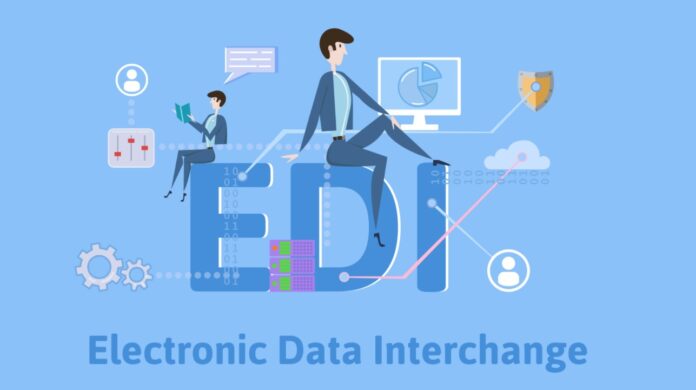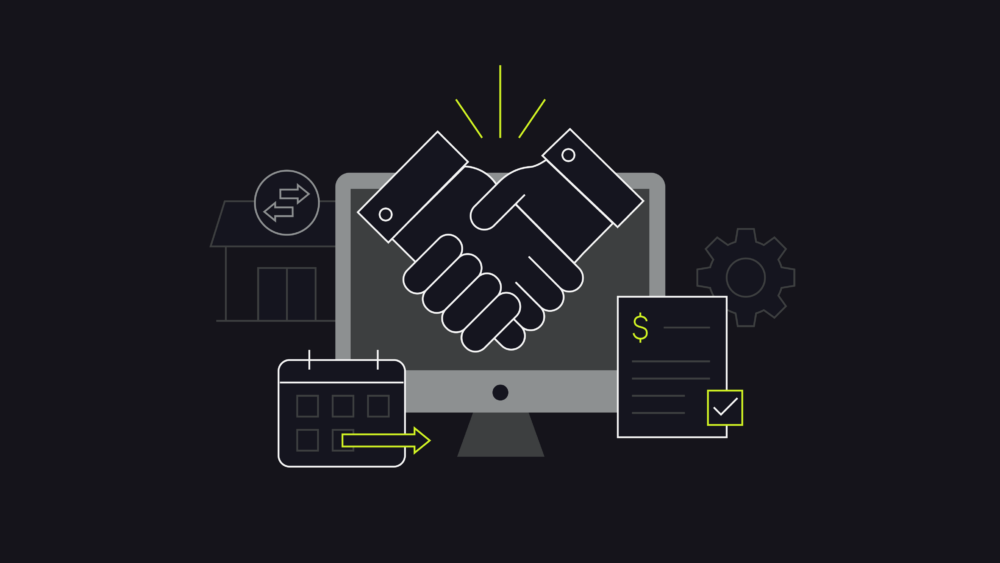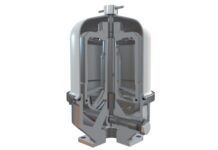
The constantly changing market and trends with slim margins are forcing IT leaders to put the best possible solutions for their customers to scale as quickly as possible.
Aspects, such as limited budget and resources, are just the few challenges in the list that many organizations face to keep up with the modern demands. To facilitate all levels and myriad niche businesses, cloud-based solutions were introduced, which were thought to be the most scalable and cost-effective, even for EDI, for businesses to fit in their culture.
Integrating a comprehensive and scalable form, EDI solutions were observed to quickly connect the trading partners and integrate external translation data into current ERP solutions, accounting or warehouse management systems for the retail and supply chain industries. If you are looking to integrate EDI solutions and scale up the business, visit edisolutions.a3logics.com.
Benefits of Using The On-premise Solution
On-premise is directly aligned with Direct EDI, or point-to-point ED, which is also the traditional EDI. The exchange of EDI transactions through on-promise is possible through the deployment of EDI software on the business’s in-house server. The entire system is connected to the ERP systems requiring internal resources to support the integration. Also, the transactions can be seamless and uninterrupted with the help of expert and proactive EDI managed services.
Integrating an on-premise EDI solution gives you complete control, which allows you to securely manage point-to-point connections and other requisites.
Facilitating on-premise EDI solutions enable the companies to stop looking for the third party for any changes. Your capable in-house team can quickly make it necessary as per the request. Moreover, you do not need to pay any additional cost for support required from a third party.
What Does the On-Premise EDI Solution Lack?

Despite the full control, you will always have to be dependent on a skilled team. Their proficiency can save you from exorbitant costs for the management and implementation of EDI. But, again hiring such an experienced and expert team is an added cost for you to manage.
Another drawback of sticking to the on-premise EDI software is it gets outdated and slows down with time. The technology advances, leaving the traditional EDI behind, leading to slow deployment, onboarding, and finally loss of revenue.
However, typically there are multiple roles for in-house EDI resources, such as new business, transformation, and integration, requiring in-depth knowledge, which are further used by big companies, or for government ERP solution.
Other Challenges with EDI
As modern technologies surpass conventional EDI, companies are also drawing their attention from on-premise to cloud-based solutions. In order to keep up with the demands, companies have to seek modern technologies and be in-lined with the market trends.
1. Complexity

Integrating EDI for B2B can be difficult as business partners always come with new demands. Traditional EDI systems are unable to adjust with the changing demands back to back, so deliver results with error.
With increasing errors, companies cannot rationally continue to use the on-premise or traditional EDI. They will have to manually test every transaction that is being sent to ensure accuracy.
2. Scalability

Every trader follows a different standardized format, which is a challenge to deal with. Every industry with a different niche uses distinct transactional sets to exchange data that suit their requirements. Outdated or legacy EDI software fails here when it comes to aligning and scaling the data requirements of different participants with the different ecosystems.
3. Lack of Automation

Organizations that keep up with the changing needs of the market and customers move from traditional systems to modern systems. Automated EDI makes processing and management easier. Companies can automate the order to cash procurement without human intervention.
Unlike traditional EDI mapping solutions, which are rigid, modern ones are flexible, allowing companies to quickly perform tasks while seamlessly integrating with third-party software, such as ERP or CRM. Traditional EDI still requires manual implementation of tasks, which is quite time-consuming, inefficient, and unscalable.
These challenges affect the business heavily, so companies look for more robust and efficient solutions, which should also be cost-efficient. The cloud-based solution is considered better and efficient to scale any kind or size of business.
But, what is this new Cloud-based EDI? Should you also switch to this solution? Before realizing whether or not to switch, let’s first understand the basics of the Cloud EDI solution.
What is Cloud-Based EDI?
Companies want flexible solutions that can be customized or personalized as per their company culture and business requirements. Cloud-based solutions are not new as they have been a suitable choice for scalability. Cloud integration into EDI is now allowing organizations to manage their connectivity with partners. Cloud-based EDI lets you connect through legacy premise systems to on-premises or cloud applications.
Also known as web-based EDI, cloud EDI uses cloud computing technology for secure, agile, and scalable business-to-business integrations.
Companies have the leverage to use a pre-built adapter, connectors, and templates to onboard new partners with agility, unlike EDI VAN or on-premise EDI.
The iPaaS makes data governance easier, so you no longer have to segregate information based on different formats. The solution can translate the data to your preferred format and validate it as per business rules.
There are multiple benefits of integrating Cloud-based EDI or Web-EDI that will be discussed later. First, let’s understand who can use Cloud-EDI!
Web-based EDI for SMEs

Unlike large enterprises, small scaling companies cannot afford high-priced on-premise EDI software. They cannot employ skilled resources to maintain them but on the other hand, they also need to connect with many stakeholders who use EDI to connect and transmit data.
In this case, SMEs can use cloud-based EDI to partner with companies, like Amazon or Walmart. Cloud EDI can seamlessly connect with the API interface to exchange messages.
For Enterprises

The enterprises with complex B2B integration and processes have challenges along the way. Their connections are numerous, and keeping track of each one is also a tedious task. Also, their onboarding takes a lot of time tackling different data formats or even taking care of the data mapping and translations.
Modern cloud-based EDI can eradicate the challenges of legacy on-premises while being able to easily and quickly connect with the legacy systems anytime.
Reasons Why Companies Are Migrating To Cloud EDI
The inflexibility and limitations with the traditional EDI tools have turned many organizational heads towards cloud EDI. Cloud EDI offers the right amalgamation of process and technology that improves and meets the current business needs.
Without the need for deploying and managing software and hardware, Cloud EDI can transform data capabilities and streamline automation.
As per Statista, the global e-retail sales in 2016 grew 24.6% and made up nearly 9% of the total retail market worldwide.
The widespread adoption of EDI is the result of the sophistication and simplicity in retrieving data from business systems.
Additionally, when surveyed by Forrester – the transactions made from EDI have exceeded 20 billion per year. Many companies have opted for EDI outsourcing while many have shifted to a cloud-based solution. The prominent advantage of Cloud-based solutions is listed below.
Advantages of Integrating Cloud-based EDI Solution
1. Cost-Effectiveness

One of the chief reasons to migrate to cloud EDI is the effectiveness of cost. Companies who had to suffer the exorbitant costs of resources, infrastructure, and maintenance of in-house or on-premise EDI, will be free from these struggles.
The overhead stress of tracking and monitoring the 24X7 system is no more. Resources can actually shift their track from continuous management of EDI software and hardware to other critical tasks.
2. B2B eCommerce Support

B2B eCommerce is accelerating, driving a significant change in the businesses. Adopting the change is also a challenge for organizations to bear. Hence, a quick and effective solution is to automate the business processes for clear and streamlined data transmission. Automating the processes isn’t enough, the transaction’s complete visibility is essential too.
Cloud systems can be compiled with third-party software systems, such as ERP or CRM for a single view of inventory position, outbound product integration, supplier PO’s and ASNs with ETA dates, and multiple inventory positions.
3. Scalability and Flexibility

Another major feature that traditional EDI does not offer. Today’s business needs are rippling as the market changes, hence the solution implemented must be flexible enough to align with them. Large organizations can integrate EDI while small and mid-sized firms can accommodate APIs.
Cloud EDI here collates both technologies meeting the needs of all kinds of businesses. The challenge of low-tech and high-tech will no longer bother the companies and will be able to connect with any partner seamlessly. This opportunity indeed helps in the quick scaling of business even if there are fluctuations in the trends.
4. Cloud Computing Advantages

Not to mention, it is very obvious that cloud EDI would leverage companies with cloud computing solutions. This again minimizes the need for purchasing or upgrading their infrastructure to keep up with the rapidly changing technology environment.
The cloud-based EDI is highly secure compared to the on-premise solution allowing you to freely cater to customers, maintaining the latest data protection safeguards. With cloud EDI, you get cloud computing business continuity and disaster recovery data protection solutions, so that you ensure that your most valuable data is always protected.
To Conclude
With time, EDI is also becoming flexible, offering multi-faceted solutions. We may see hybrid EDI solutions that will be able to pull multiple types of EDI, offering 100% scalability to the organizations.
Organizations can leverage the amalgamation of EDI managed services provider’s expertise, cloud-based tools, and sophisticated integration to simplify EDI adoption.
No matter how complicated the supply chain or how limited your expertise on EDI is, you will always be able to benefit from the latest technologies integrated into EDI solutions that are too cost-effective.
To summarize, we will say, cloud EDI is a better and 100% fruitful option to pick to simplify supply chain management, retail management, logistics management, and healthcare employee benefits management.








